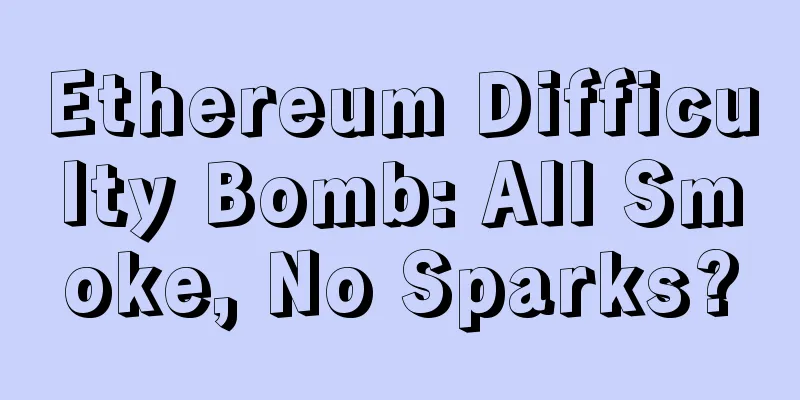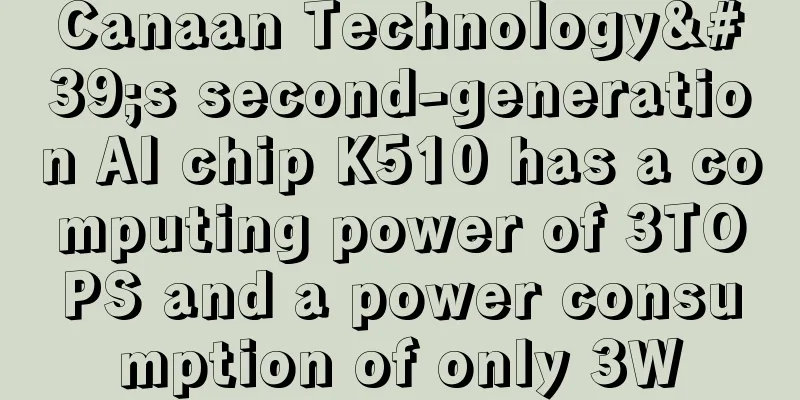Ethereum Difficulty Bomb: All Smoke, No Sparks?

|
At some point in the future (perhaps later this year, but the timing is currently undetermined), Ethereum may switch from its proof-of-work (PoW) consensus algorithm to a proof-of-stake (PoS) system called Casper (which developers are still working on). This switch may sound like a minor change to those who don’t know much, but in fact the change in this parameter will have a huge impact. When the protocol change occurs, the Ethereum blockchain will hard fork, which means that in the short term, two networks - the new and the old - will exist at the same time. At this point, the Ethereum team must convince the majority of users to upgrade to the new PoS blockchain. Otherwise, Ethereum will face the risk of creating another blockchain, just like the last hard fork that created ETC. On the surface, getting companies using the Ethereum network to switch over wouldn’t be a problem. After all, PoS is faster, more scalable, and consumes less energy than PoW. For the vast majority of people in the Ethereum community, Casper sounds like a pretty good deal. Unless, of course, you’re an Ethereum miner. That’s because PoS doesn’t rely on mining. Instead, it puts the task of creating blocks on the shoulders of those who hold a stake in the blockchain — a move that essentially puts miners out of work. Time BombHowever, there are two things that could go wrong during Ethereum’s “big switch”. The first is if Casper doesn’t work as planned. In this case, Ethereum will have to delay the switch. The second is if miners continue to mine the old chain. However, Ethereum has always had a plan for this - the so-called “difficulty bomb”. The difficulty bomb was created shortly after the Ethereum network was created to make mining more difficult over time. Initially, the slowing effect was gradual, but when Casper was introduced, the difficulty of mining skyrocketed. When mining becomes more expensive, miners can't generate as many blocks. Block times become longer, which results in lower returns for miners. Eventually, the network becomes less useful. At least that was the plan. Miner ProblemHowever, miners don’t seem to care too much. Jonathan Toomim, co-founder of cloud mining company Toomim Brothers, which has a high percentage of its investment in Ethereum, told CoinDesk that the difficulty bomb is currently affecting their purchasing decisions. All the hardware they purchased must be recovered before Ethereum is updated to Casper. Toomim also noted that if Ethereum mining becomes unprofitable, he will switch to mining other coins such as Zcash or ETC, which have similar mining mechanisms. However, this may be a problem for Ethereum. If a large number of miners leave Ethereum before the switch to PoS, this could affect the security of the main Ethereum blockchain, which is still used by a large number of users. Toomim also made it clear that he plans to mine altruistically, saying:
Ice AgeThe Ethereum difficulty algorithm began with a core commit in the “Frontier” patch in August 2015 (the first version released by the Ethereum network). At the time, Ethereum’s then COO Stephan Taul wrote in a blog post that starting with block 200,000, mining would become increasingly difficult, so by the end of 2016, Ethereum mining would enter an “ice age,” when the network would freeze. But less than a year later, the Ice Age was delayed, in part to give Casper more development time. Ethereum co-founder Vitalik Buterin wrote on Reddit:
How slowly? This difficulty adjustment will happen every 1,000 blocks. Currently, the average block time is 14 seconds, but last year, it was around 15 seconds. According to Buterin’s calculations three months ago, by mid-August this year, the block time will double to 30 seconds, and by 2025, the block time may be as high as 14 minutes. A 30 second block time may not sound very long to some people, especially compared to Bitcoin’s 10 minute block time, but for clients running apps on the Ethereum network, it will be very annoying. Calm attitudeHowever, some ethereum users say the temporary slowdown is worth it because PoS is faster. Zack Coburn, lead developer of FirstBlood, which runs on ethereum, said he was not surprised. He told CoinDesk:
However, some others have a different view. Casper blockchain developer Rick Dudley believes that any change to block time is a big deal. If block time climbs to 2 minutes, the difficulty bomb will seriously affect businesses.
However, he noted that the difficulty bomb will only explode if there is already a viable alternative: PoS. At this point, Dudley said he feels ethereum will have no problem convincing users to upgrade. He concluded:
|
>>: Among the factors that threaten Bitcoin’s decentralization, cost is the smallest one
Recommend
What is a beauty mole? What does a beauty mole represent?
In mole physiognomy, each mole in different parts...
The ultimate question at the end of the year: Will there be a bull market in 2019?
On Christmas Eve, Bitcoin ushered in a long-await...
Saudi Arabia's richest prince: JPMorgan Chase CEO is right, Bitcoin will collapse
In a land of princes and billionaires, Alwaleed b...
What does Ju Men in the life palace represent?
Ju Men is the second star in the Big Dipper. It r...
What is the difference between lying silkworm eyes and phoenix eyes?
Everyone's eyes are shaped differently and co...
Which moles may bring about a second marriage?
Which moles may bring about a second marriage? Be...
As the “London Upgrade” approaches, Ethereum and its ecosystem leaders are performing well
As the Ethereum London upgrade approaches, Ethere...
The face of a person who likes to make trouble
In life, we often meet people who like to make tr...
Is appearance determined by nature or nurture?
Is appearance determined by nature or nurture? Le...
Mole position and destiny - which moles will bring us wealth and fortune
The moles on our body have many different meaning...
How to read a woman's chin
A woman's chin means her luck in her later ye...
What will the personality and fate of a woman with a fleshy chin be like?
Most women prefer a pointed chin rather than a ro...
Facial features of people who are not good at dealing with others
In daily life, we often see a type of people who ...
Bloomberg: What the September rate cut means for the economy and the election
It’s finally time to cut interest rates. That’s w...
Women with what facial features will definitely take revenge
In life, there are many people who will do anythi...









